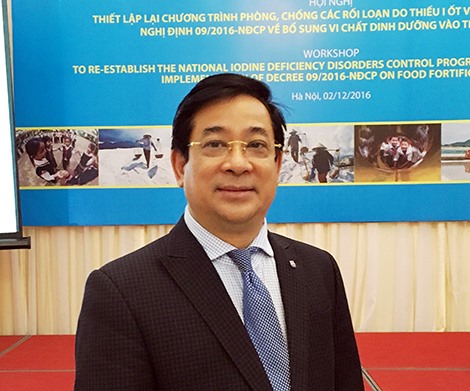 Opinion
Opinion

Healthcare service quality in public hospitals has improved, but not yet met user demands. Lương Ngọc Khuê, director general of the Medical Examination and Treatment Department (Ministry of Health) talks with Hải Quan (Customs) Newspaper about the issues.
 |
| Lương Ngọc Khuê |
In June, 1,900 medical services set new price ceilings, lifting the rate for many services two or three times for patients without medical insurance. Healthcare service quality in public hospitals has improved, but not yet met user demands. Lương Ngọc Khuê, director general of the Medical Examination and Treatment Department (Ministry of Health) talks with Hải Quan (Customs) Newspaper about the issues.
Can you explain how the increase in healthcare service charges to patients without medical insurance affects targets to improve services in clinics and hospitals?
Previously, many people with or without medical insurance chose to pay themselves rather than rely on insurance-paid services because they did not want to waste time joining queues.
However, since the medical service fees for non-insured patients rose, most people have shifted to insurance for examinations and treatment.
In fact, the rise in medical service fees has involved only four out of seven elements making up hospital fees. This has not seriously affected patients.
The added income from the extra medical fees has helped clinics and hospitals improve the quality of healthcare service.
In several instances, healthcare services have increased considerably to meet demands of patients, including an upgrade of facilities and the installation of hi-tech equipment.
Many hospitals have accepted online and phone bookings to save time for patients.
People are still questioning if the quality of healthcare services equals the money they pay. What do you think?
To satisfy patients, public clinics and hospitals have had to change from the "ask-and-give" mechanism to a service mechanism. This means treating patients as clients that have to be attracted to a hospital and well looked after.
This was the only way to improve the quality and prestige of hospitals.
The Ministry of Health has asked all hospitals to invest more in hi-tech equipment and facility upgrades.
So far, many hospitals have established teams charged with welcoming and instructing patients so procedures can be quickly processed.
Hospital staffs have also been trained in behaviour that keeps patients satisfied.
In recent years, both patients and the healthcare insurance agency have shown concern about the over-use of tests and images in clinics and hospitals. This can lead to more financial burdens for patients and the insurance agency. How does the Health Ministry control the situation?
The Health Ministry has regulated that tests and making images, such as X-rays or ultrasounds, must suit a patients’ situation during examination, diagnosis and treatment.
In future, the prescription for tests and para-clinical tests will be monitored via a data connection between the Health Ministry and the medical insurance agency.
The ministry has continued to look at different ways of monitoring the situation.
The ministry has been carrying out a pilot plan to connect test results in central-level hospitals to reduce time and medical costs for patients.
This plan will be expanded to help monitor any over-use of tests and images. – VNS









